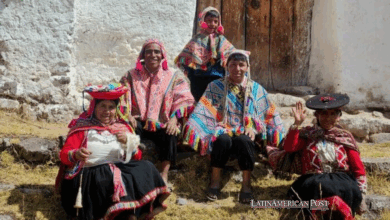Exploring Mexica Culture Through a Landmark European Exhibition

The first European exhibition on the Mexica civilization, ‘Mexica: Gifts and Gods at the Templo Mayor,’ presents an unprecedented collection of 500 never-before-seen artifacts in France, offering a deep dive into pre-Columbian Mexica culture, previously known as the Aztec civilization.
Unveiling ‘Mexica: Gifts and Gods at the Templo Mayor’
Europe is set to host a groundbreaking exhibition titled ‘Mexica: Gifts and Gods at the Templo Mayor,’ showcasing the Mexica civilization, commonly and erroneously referred to as the Aztecs. This exhibition, premiering in Paris, is a significant cultural event featuring an impressive array of about 500 unique artifacts from Mexico, many of which are being displayed in Europe for the first time.
Running from April 3 to September 8, the exhibition at the Quai Branly Museum in Paris offers visitors an immersive experience into the “small universes” of the Mexica thought process. Fabienne de Pierrebourg, responsible for the museum’s American collections, shared insights into the exhibition, providing an unprecedented perspective on European Mexica culture. It showcases the findings of archaeological research conducted at the Templo Mayor, the primary temple of the Mexica people in their capital city of Tenochtitlan.
Mexica Civilization’s Secrets Revealed
The exhibition is poised to unravel the mysteries of the Mexica civilization, which came to light with the discovery of a circular monolith representing the moon goddess Coyolxauhqui in 1978. This discovery, beneath modern Mexico City’s streets, revealed Tenochtitlan’s remains and its sacred precincts. Before this, knowledge of Mexica culture was primarily derived from codices and manuscripts in Spanish and Latin, researched by the father of the exhibition’s curator, Leonardo López Luján, in collaboration with Mexico’s National Institute of Anthropology and History.
The exhibition’s design, featuring audiovisual installations, is crafted to convey the anthropological and geological significance of the Mexica civilization. Visitors will be greeted with a historical introduction to the Mexica society, migrants who settled in Mexico in the 13th century, and a projection of the Stone of the Sun.
Different exhibit sections delve into Mexica cosmology, exploring their theological culture and offerings. The 209 offerings discovered to date are on display, featuring minerals, plants, and cultural objects. Initially, these offerings included animals and humans, illustrating the broad spectrum of Mexica religious practices.
Significance Beyond Art: Power and Societal Structure Revealed
Steve Bourget, another Quai Branly museum representative, emphasized the significance of these findings beyond their artistic value. The study of these artifacts reveals the power and societal structure of the Mexica civilization. The Templo Mayor, located at the heart of Tenochtitlan, symbolizes the centrality of this religious and cultural site in the Mexica world.
The exhibition will also explore the concept of Mexica sacrifice and ethnography, featuring carved animal figures with a naturalistic approach and objects from daily life. A recurring theme throughout the exhibition is the symbolism of duality, such as life and death, masculine and feminine, and the different realms of the universe – underworld, earthly, and celestial.
This landmark exhibition represents a significant cultural bridge, bringing the richness of pre-Columbian Mexica culture to a European audience. It comprehensively explores the Mexica civilization, shedding light on aspects previously overshadowed by colonial narratives. By presenting artifacts and insights from recent archaeological findings, the exhibition challenges and enriches the existing understanding of the Mexica people, their beliefs, practices, and their profound impact on the cultural landscape of the Americas.
Legacy of Mexica Civilization: A Tapestry of Complexity
The Mexica civilization’s complex social structures, advanced astronomical and mathematical knowledge, and rich artistic traditions have long fascinated scholars and the general public. This exhibition provides a unique opportunity to appreciate the depth and sophistication of their culture, often reduced to simplistic interpretations in the past.
In addition to its educational value, the exhibition is a testament to the enduring fascination with ancient civilizations and their continued relevance in contemporary discourse. It highlights the importance of preserving and studying historical artifacts as relics of the past and living testimonies of human ingenuity and creativity.
Also read: Latin American Talent Shines with Nominations at the 2024 Oscars
‘Mexica: Gifts and Gods at the Templo Mayor’ is more than just an exhibition; it is a cultural event that celebrates the legacy of the Mexica civilization and offers new insights into a complex society that has significantly influenced the historical narrative of the Americas. As visitors walk through the halls of the Quai Branly Museum, they will journey through time, discovering the rich tapestry of Mexica culture and its enduring impact on the world.




